A PICTURE IS WORTH A THOUSAND WORDS – SO DON’T MISS OUT ON AN OPPORTUNITY!
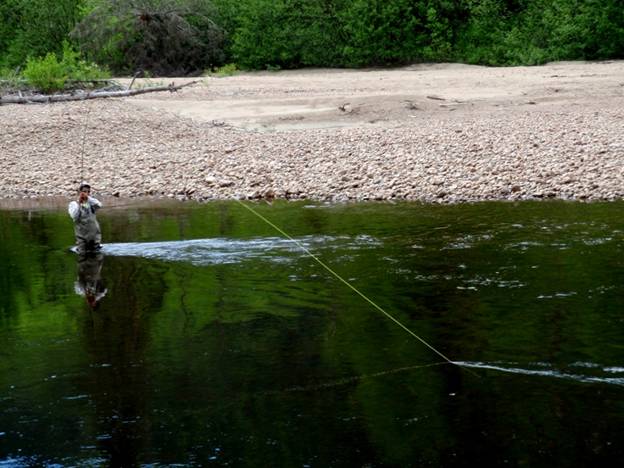
I was walking back to the truck when I came across Dany – Connected to the first salmon of the 2009 season! The truck was 500 yards away. I would never have been able to capture this moment if I hadn’t had a camera right there in my fishing vest.
I’m not a very good photographer, but I do have fun taking pictures and capturing the moment. Here are a few of my hints, tricks and (very) humble recommendations.
I have fun taking pictures. It is just a blast with digital cameras because we can click away and simply delete the images that we don’t like. Back in the days of 35mm film cameras, that would be a very expensive proposition!
What and why do I use right now?
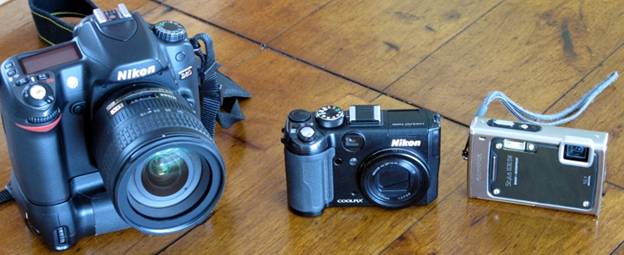
I use currently: (left to right)
- Nikon D80 for shoots;
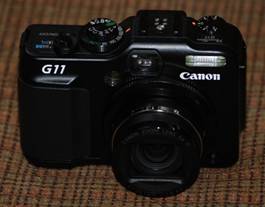 - Nikon Coolpix P6000 for a carry-around camera and;
- Nikon Coolpix P6000 for a carry-around camera and;
- Olympus Stylus 1030SW on the river.
(Oh, so how did I capture a image of my 3 cameras, I used Liliane’s Canon G11 - right)
Why three cameras in the bag? I guess I’m just extravagant! Then again, just like a fly rod, it is pretty hard to find a camera that can do everything well.
Nothing beats a DSLR (digital single-lens reflex) camera for action shots, low light, flexibility and (relative) ease of use of advanced features.
Then again, my big Nikon weighs 3.2 lbs with the 18-70mm lens! Compare this to 0.6 lbs for the P6000 and a mere 6.8 oz for the Olympus.
Friends often ask how I manage to capture images while we’re out on the water. Well, number one is to get out on the water! Just like the rest of our equipment, it won’t do much good if you don’t have any cash left to get out and play!
Second, you have to actually have your camera with you! This is why the waterproof Olympus is so much fun. No more worrying about ruining a camera in the rain, dust or by accidentally wading too deep! Waterproof cameras are so much fun and easy to leave in the fishing vest.
My waterproof is a 10.1 mega pixel camera, so it works just fine for the images I capture. I can always zoom and crop an image to get a better layout.
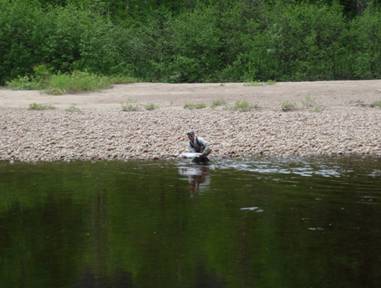
The original layout with the Olympus ...
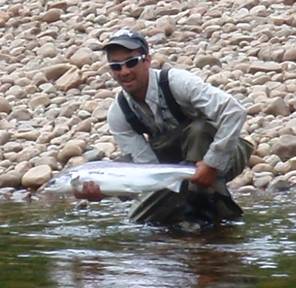
Zoomed and cropped! Dany B. With a nice salmon.
I could have sharpened up the image a bit with some post treatment, but I didn’t want to play around too much. If I did, I would use my standard software, Gimp 2.6, which does pretty well everything I need and it’s free!
Ok, so I have a decent waterproof camera, why would I have the Coolpix camera?
Well, the Coolpix, which is similar in quality to Lilane’s G11 is sort of “one step up” from the point and shoot Olympus. It is easier to get to and exploit the camera settings, it can shoot RAW image format, it can use an external as well as remote flash and the image sensor is bigger. It also has an optical viewer which I prefer over the LCD screen (old habits die hard) as well as manual focus.
It’s not shock and water proof, but I can always keep it in a ziplock bag in a vest pocket. I use it because it has better image quality and offers better “post processing” when I use RAW formats. It is my “walk around” camera which is always in my coat pocket or briefcase.
So what does a DSLR bring to the beach that the “advanced digital” doesn’t have?
There are a whole lot of advantages of a DSLR over their smaller cousins, but here’s a short list:
Multiple frames per second
Up to 4 per second for an almost unlimited number of shots. I can shoot a couple hundred images in a row of a casting sequence then pick and choose the best ones.
Low light shooting
The sensor on a DSLR camera is even bigger and you can shoot at very high “film speeds” or ISO settings. This means I can often do stills without a flash or capture images which freeze the action.
Camera controls
Since a DSLR is made to be used in semi-auto or even manual modes, the controls are setup to make it easier to access the bells and whistles. For example, on my camera, I am constantly changing ISO, shutter speed, aperture, auto-focus mode, metering mode, white balance, flash compensation, exposure compensation and flash mode.
Multiple lenses
Of course, when people think of SLR cameras, they first think of cameras which have changeable lenses. I only use 3-4 lenses and principally use only 2 different zoom lenses. This way, I can zoom way out for wildlife, candid shots and close-up photography. I can also “zoom in” to get wide angle shots indoors and for landscape images. This is important to look into, especially with many of today’s “super zoom” digitals. They have fine zoom (long distance) capacity, but they just can’t zoom out wide enough for many everyday situations like baby pictures, family gatherings and indoor photos.
I also use the DSLR for close-up photography. Both the other cameras can do this too, but the controls on the big D80 are easier to use for this kind of work.
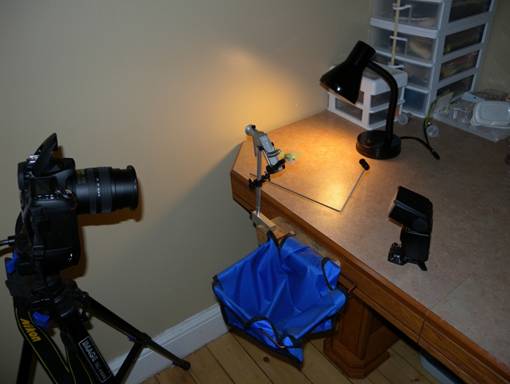
I use a remote flash to illuminate, a desk lamp to help manual focus and turn the built in flash way down to just fill a bit.
Then again, one doesn’t really need all this:
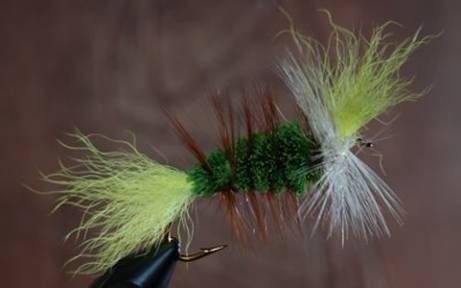
From the DSLR on autofocus
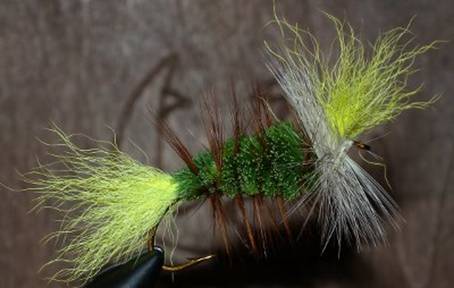
From the P6000 on manual focus
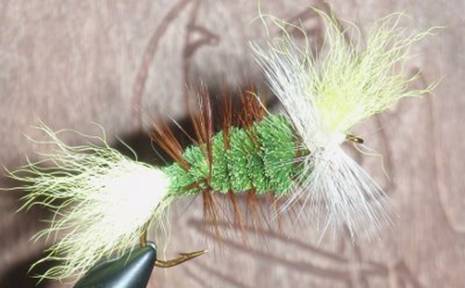
And the Olympus 1030 on macro autofocus.
So you see, any of the cameras gives acceptable results. (with the Olympus, I should have backed up and zoomed in so the flash would be less harsh).
A few tricks when using any camera.
To get a good capture of the fly line, you must have the sun behind you and a good contrast in the background (like dark water or forest) as well as a fast shutter speed to “freeze” the action.
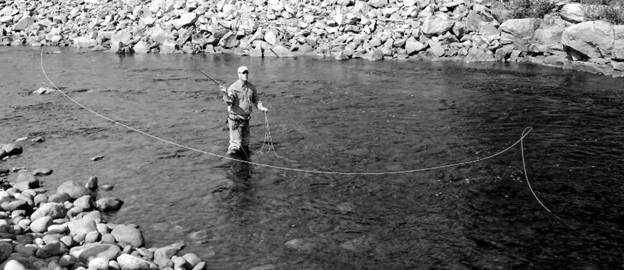
Dave B at the 2009 Salmon Mentorship
Don’t be afraid to “zoom in”, even if this means kinda getting in the face of your subject. When taking “money shots” don’t worry about the scenery, get the angler and the fish! A once in a life time fish will be forever remembered if it is recognizable in the image.
I wonder which image Sylvain prefers on his desktop:

Or ...
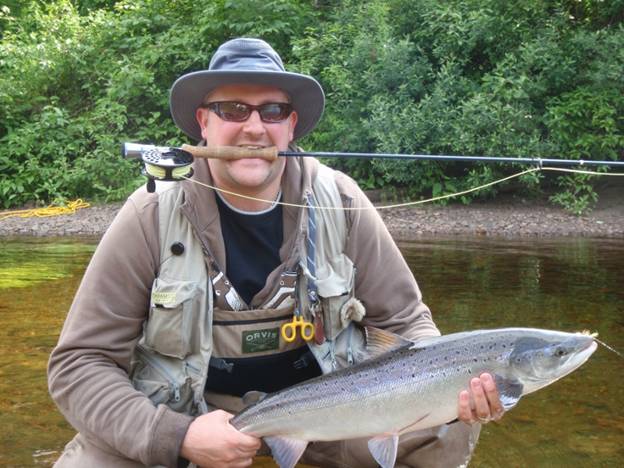
... ‘nuff said!
Oh - both were taken with an Olympus 1030, I burst 4-5 images while zooming out. In this way, a fish which is to be released is out of the water for about 3-4 seconds.
Lastly, take the time for photos while you’re not on the water. It is a wonderful way to relax, rest a pool (or your shoulder) and have a look around you. It’s also a good opportunity to play with a camera, finally get the dial OFF of AUTO and have a look at the World in a whole new light.
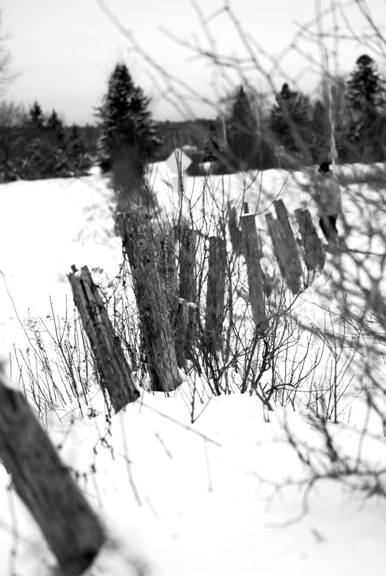
A photo expedition in the back yard